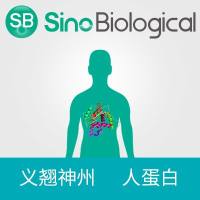Site-Directed Mutagenesis In Vitro by Megaprimer PCR
互联网
866
Among the various mutagenesis procedures based on polymerase chain reaction (PCR), the “megaprimer” method appears to be the simplest and most versatile. The method utilizes three oligonucleotide primers and two rounds of PCR performed on a DNA template containing the cloned gene to be mutated (1 –3 ). The basic megaprimer procedure is shown schematically in Fig. 1 , where A and B represent the “flanking” primers that can map either within the cloned gene or outside the gene (i.e., within the vector sequence) and M represents the internal “mutant” primer containing the desired base change. The mutagenic primer may encode any of the following mutations or combinations thereof: a point mutation (single nucleotide change), a deletion, or an insertion (1 ,4 ). The first round of PCR is performed using the mutant primer (e.g., M1 in Fig. 1 ) and one of the flanking primers (e.g., A). The double-stranded product (A-M1) is purified and used as one of the primers (hence the name “megaprimer”) in the second round of PCR along with the other flanking primer (B). The wild-type cloned gene is used as template in both PCR reactions. The final PCR product (A-M1-B) containing the mutation can be used in a variety of standard applications, such as sequencing and cloning in expression vectors, or in more specialized applications, such as production of the gene message in vitro if primer A (or the template sequence downstream of primer A) also contains a transcriptional promoter (e.g., that of SP6 or T7 phage).









